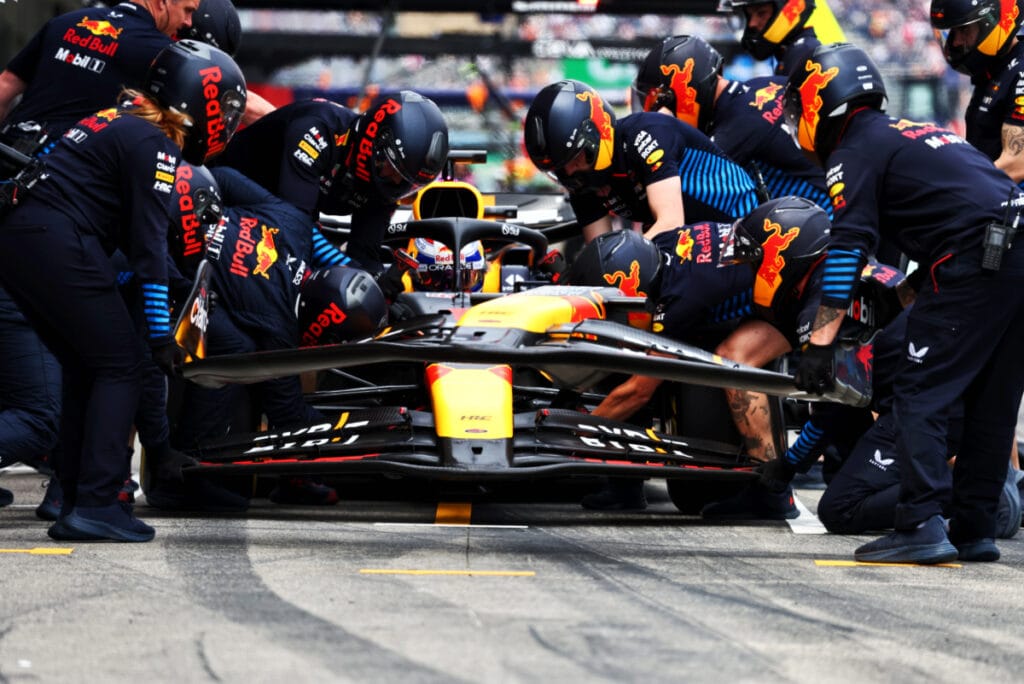Formula 1 has long been synonymous with cutting-edge technology, speed, and precision.
As the pinnacle of motorsport, Formula 1 has constantly pushed the boundaries of what’s possible in terms of vehicle performance, strategy, and innovation. From the engine design to tire management and aerodynamics, every component of an F1 car is carefully crafted for one goal: to win.
But one area that is rapidly transforming the sport is the integration of artificial intelligence and vehicle data analytics, influencing everything from race strategies to car development and fan engagement.
AI in car development and race strategy
In recent years, Formula 1 teams have begun to harness the power of AI to enhance car performance. AI and machine learning algorithms are used to analyse massive amounts of data from sensors placed throughout the car, including engine performance, tire wear, and aerodynamics.
This data allows engineers to make real-time adjustments to optimize performance on the track, ensuring that the car is performing at its peak.
One of the most significant uses of AI is in race strategy. AI models can simulate different race scenarios and suggest the best strategies based on track conditions, weather, tire choices, and fuel consumption.
These algorithms can process vast amounts of data at a much faster rate than humans, enabling teams to make split-second decisions that could be the difference between victory and defeat.

During a race, engineers communicate with the driver in real time, suggesting pit stops, tire changes, and adjustments based on AI predictions.
The role of AI in fan engagement
While AI is primarily associated with improving car performance, its impact also extends to fan engagement. With the increasing use of digital platforms, F1 teams and organizers have found new ways to connect with their audience. AI algorithms are now used to personalize content, recommend videos, and create interactive experiences for fans.
In addition, AI is used to generate realistic visual content that enhances the fan experience. For example, AI picture maker tools allow for the creation of stunning digital renderings of cars, drivers, and race tracks.
This content can be used in promotional materials, social media posts, and even virtual reality experiences, offering fans a more immersive connection to the sport.
An AI picture maker can generate high-quality images that capture the essence of the Formula 1 experience, from the thrill of a high-speed corner to the intensity of a driver’s focus in the cockpit.
With the rise of these technologies, fans can experience Formula 1 in entirely new ways, blurring the line between the physical and digital realms.
AI in simulation and training
Another significant area where AI is making an impact is in driver training. In order to prepare for the challenges of an F1 race, drivers must undergo extensive simulation training. These simulations are powered by AI, which helps create highly realistic environments that mimic real-world conditions.
The simulations can account for variables like track temperature, weather conditions, and even competitor behaviour, giving Formula 1 drivers a more accurate picture of what to expect on race day.
Formula 1 teams also use AI in their simulators to analyse driver performance and provide feedback. By studying how drivers react to different scenarios, AI systems can suggest ways to improve driving techniques, refine race strategy, and enhance critical decision-making under pressure.

This level of precision and personalization is invaluable in a sport where milliseconds can determine the outcome of a race.
Autonomous vehicles: The future of Formula 1?
Looking ahead, some industry experts speculate that autonomous technology could eventually make its way into Formula 1. While human-driven racing remains the core of the sport, the advancements in AI and automation could pave the way for a new era in motorsports.
AI could play a crucial role in developing autonomous vehicles capable of racing at high speeds on track, with machine learning algorithms optimizing every aspect of performance in real time.
While we are still far from seeing fully autonomous cars on the Formula 1 grid, the technology could one day revolutionize the sport and even give rise to new types of competitions.
Conclusion
As Formula 1 continues to evolve, the influence of AI is undeniable. From car development and race strategy to fan engagement and driver training, AI is reshaping every aspect of the sport. As these technologies continue to develop, the future of motorsport will likely see even greater integration of AI, pushing the boundaries of performance and creating a more immersive experience for fans.
The use of tools like AI picture maker in marketing and digital content is just one example of how technology is transforming the way we experience Formula 1, and it’s exciting to think about the innovations that are yet to come.










